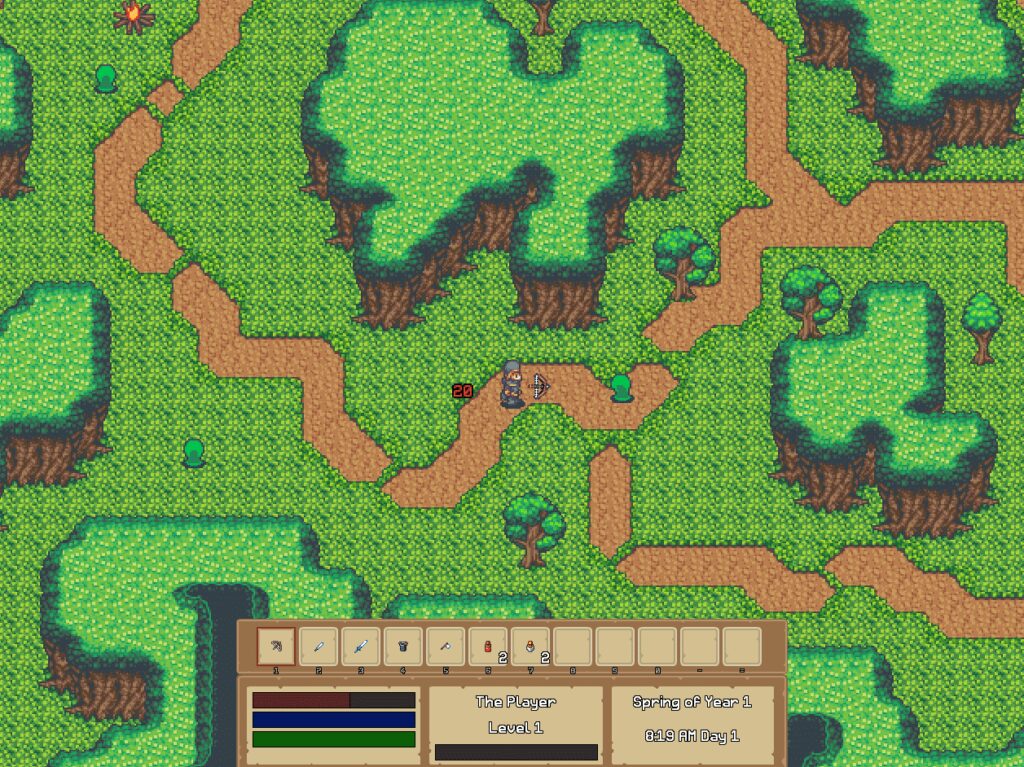Developing a video game involves using various programming languages and tools, such as game design documents, programming languages like C++, C#, Java, and Python, as well as game engines, 3D modeling and animation tools, text editors/IDEs, and audio software. A clear concept and game design document are important for effective communication in game development. C++ is the industry standard for developing AAA games, while C# is popular for creating games across multiple platforms, and Java offers cross-platform compatibility for games and apps. Python is beginner-friendly and used to handle game logic, scripting, and algorithms. Audio software is vital for creating immersive experiences in games.
From Scratch to Screen: The Programming Languages and Tools Needed to Bring Video Games to Life
Video games have come a long way since their inception in the 1950s, and as technology advances, so does the complexity and creativity involved in game development. Creating a video game requires a combination of various programming languages and tools, each serving a specific purpose in bringing the game idea to life. In this article, we will explore the programming languages and tools used in game development from scratch to screen.
Game Design
Before any programming begins, a game design document or a high-level concept is created, outlining the game’s story, characters, mechanics, and aesthetics. This document helps the team align their ideas with a clear direction and goals for the game. It’s important to have a clear concept, as more game assets can be created with less confusion during the development process. The game design document serves as a blueprint for the entire team and will allow for smooth communication.
Programming Languages
The programming language required to create a video game varies depending on the game’s scope and platform. Some languages lend themselves to specific game genres or platforms. Therefore, deciding the game’s design, platform, and genre will significantly impact the selection of programming languages.
C++: C++ is a high-performance object-oriented programming language used to develop AAA (triple-A) games. It’s the industry standard for game development due to its ability to handle complex calculations and memory management. C++ is used to create realistic physics, AI, networking, and any other critical aspects, ensuring smooth gameplay. The source code allows for adaptation to any platform with the necessary modifications, making it one of the most versatile programming languages for game development.
C#: C# is a modern object-oriented programming language designed by Microsoft to develop Windows applications. C# is one of the primary programming languages used in Unity, a popular game engine, which allows game developers to create 2D and 3D games across multiple platforms. It’s easy to learn and has a smooth debugging process, making it an ideal choice for indie game developers or small teams.
Java: Java is one of the most used programming languages and has been used in the development of high-end games such as Minecraft. Java is also used in developing web-based games and apps, providing a versatile option for game development. Java is an object-oriented language with cross-platform compatibility making it easier for developers to build games that can be played on multiple devices such as smartphones, tablets, and computers.
Python: Python is a beginner-friendly programming language with a simple and concise syntax that makes it easy to learn. Python is used in game development to handle game logic, scripting, and algorithms. The use of python in game development shows promise because python can also be used in artificial intelligence (AI), data analysis, and machine learning.
Tools
Creating a video game requires various tools to help bring ideas to life. These tools range from game engines to specific software created to handle a specific aspect of game art or programming.
Game Engines: A game engine is software that provides developers with the necessary tools to create and manage games. It helps developers streamline the game development process by providing a pre-built framework consisting of physics engines, game editors, scripting languages, and other features required to create games. There are several game engines available, including Unreal Engine, Unity, and Godot.
3D Modeling and Animation: A 3D modeler is a tool used to create the 3D assets used in games. This tool allows artists and developers to create realistic characters, objects, and landscapes, used in-game environments. 3D animation software is a tool used to give those 3D models movement and personality, bringing the game to life. Popular 3D modeling and animation tools include Autodesk Maya, 3ds Max, and Blender.
Text Editors/IDEs: Text editors or Integrated Development Environments (IDEs) are programs designed for writing and executing programming code. There are dedicated programming environments for game engines, such as Unity’s Visual Studio and Unreal Engine’s Unreal Editor. For standalone programming, popular IDEs include Microsoft Visual Studio, PyCharm for Python, and IntelliJ IDEA for Java.
Audio Software: Sounds and music are essential components in creating an immersive video game experience. Audio software allows game developers to create sound effects, music, dialogue, and voiceovers. Popular audio software tools used in game development include Reaper, Logic Pro X, and Pro Tools.
Conclusion
Creating a video game from scratch to screen requires a lot of work, and the right combination of tools and programming languages is essential to bring a game idea to life. The programming languages and tools mentioned above are essential in creating an enjoyable gaming experience for players. Therefore, it’s essential to select the right tools for the job and be familiar with the programming languages required for game development. As technology advances, new programming languages and tools are sure to emerge, and staying up-to-date with the latest trends is crucial for creating innovative and engaging games.
